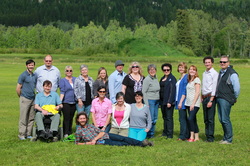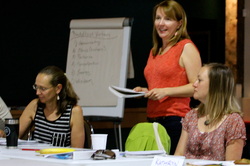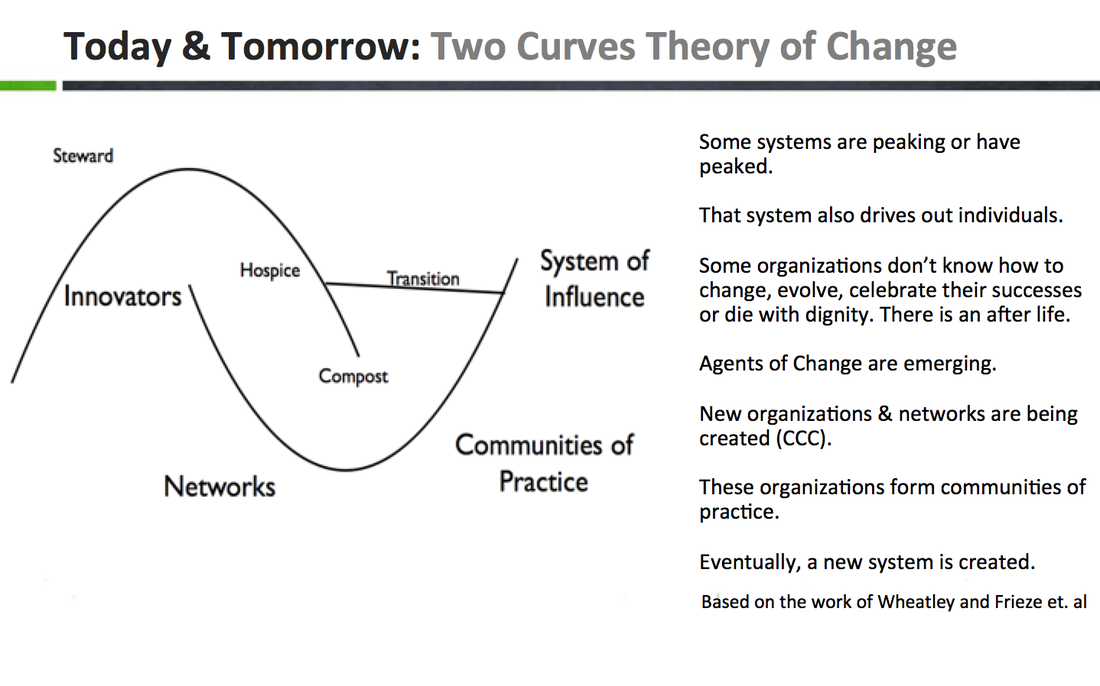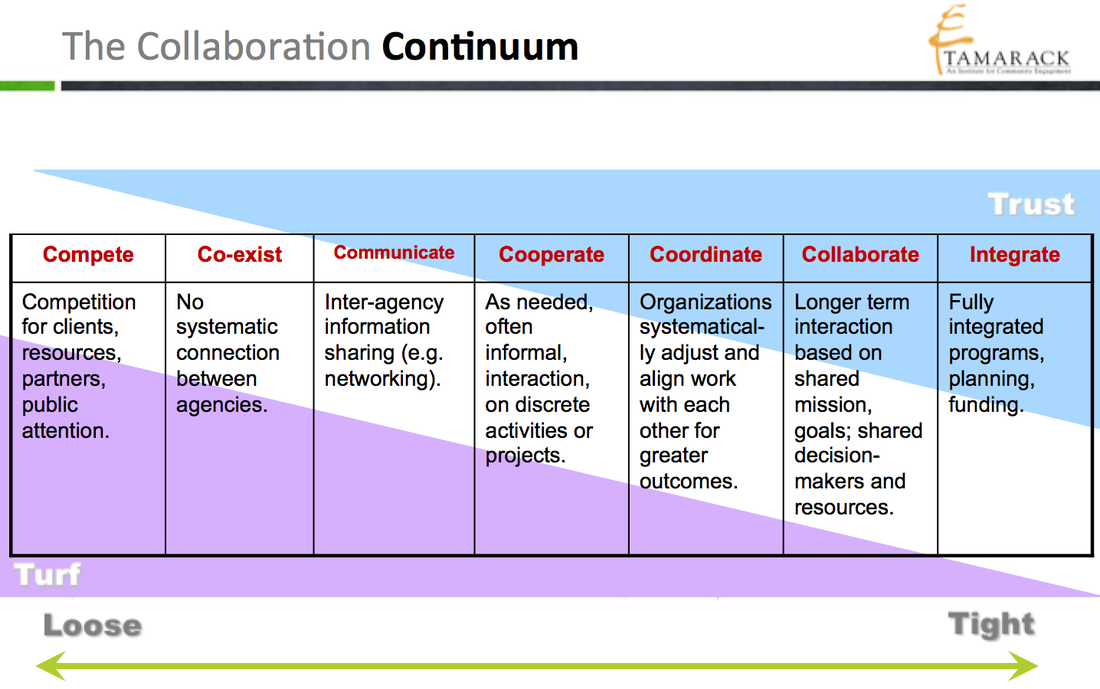Phase 2 - Community Coordination
"It is better to lead from behind and to put others in front, especially when you celebrate victory when nice things occur. You take the front line when there is danger. Then people will appreciate your leadership." - Nelson Mandela
The Community Coordination project is focused on convening discussions and action toward improving the fabric and framework of our community. Led by Golden Community Resources Society (GCRS), the project team will be running along side with the Kicking Horse Country-based organizations that wish to communicate, cooperate, and collaborate.

Project Definition
Following the original CBT CIP/AAP grant application,
“The outcome will be the above project objectives. Recommendations regarding potential resource efficiencies for participating NFPs, supported by meaningful information, gathered in a respectful manner, and presented in logical format that is easy to understand. Success will be measured by the number of NFPs involved and willingness of the NFPs to adopt the recommendations.”
With the strategic purpose of this project defined, it becomes much easier to:
1. Clarify the scope of its reach and control
2. Examine models that from other communities and build on previous experience
3. Collect and summarize the strengthens, weaknesses and wishes of the local non profit sector
4. Integrate the above models and local non profit capacity into right-sized potential initiatives
5. Prioritize projects according to the community’s readiness and impact
Project Goals
What this Project is not?
There are many other groups asking questions of the community and planning particular areas of its development. This project is not intended to overlap with the Recreational Facilities Assessment, the Early Learning and Care Project, the Official Community Plan update, Golden & Area A’s Vital Signs, Golden Area Initiatives Community Economic Development Plan. However, with a small population of highly engaged individuals with multiple roles, it is inevitable that there will be overlap with contact, questions and recommendations.
The report and research excludes hospitals, schools and post-secondary education institutions.
For example, the Early Learning and Care Project is asking: "What resources can we pool and how can we do it to make a facility available that has an early learning and care element to it (group child care)?” (This solution may include other non-early learning and care non profit organizations.) One could replace“early learning and care” with any other sub-sector of non profit organizations– sports, social services, seniors, youth, etc. It’s hoped that this Report will identify some opportunities that will strengthen all non profits (that opt in) and strengthen some specific sub sectors (that opt in).”
The CSRD & Town of Golden are likely to undertake a Recreation Facility Assessment in 2012-13 (now 2014), possibly through the Whitetooth Legacy Fund (held by CSRD). Without knowing more details of this project attempts have been made to 1) minimize survey fatigue, 2) align the two projects, and 3) minimize gaps between them.
While the public sector (including local government, provincial government, education and colleges) is closely linked to the non profit sector, efficiencies in the public sector fall outside of this projects scope. However, as a small community, there may be opportunities for the non profit sector to leverage and benefit from new resources and efficiencies from both the public and private sector.
Following the original CBT CIP/AAP grant application,
“The outcome will be the above project objectives. Recommendations regarding potential resource efficiencies for participating NFPs, supported by meaningful information, gathered in a respectful manner, and presented in logical format that is easy to understand. Success will be measured by the number of NFPs involved and willingness of the NFPs to adopt the recommendations.”
With the strategic purpose of this project defined, it becomes much easier to:
1. Clarify the scope of its reach and control
2. Examine models that from other communities and build on previous experience
3. Collect and summarize the strengthens, weaknesses and wishes of the local non profit sector
4. Integrate the above models and local non profit capacity into right-sized potential initiatives
5. Prioritize projects according to the community’s readiness and impact
Project Goals
- To cultivate a prosperous and inclusive community
- Assist in ongoing and proactive prioritization and planning
- Resource maximization (volunteer, staff, financial, time)
- Coordinated decision-making
- Meaningful and satisfying jobs in the community.
What this Project is not?
There are many other groups asking questions of the community and planning particular areas of its development. This project is not intended to overlap with the Recreational Facilities Assessment, the Early Learning and Care Project, the Official Community Plan update, Golden & Area A’s Vital Signs, Golden Area Initiatives Community Economic Development Plan. However, with a small population of highly engaged individuals with multiple roles, it is inevitable that there will be overlap with contact, questions and recommendations.
The report and research excludes hospitals, schools and post-secondary education institutions.
For example, the Early Learning and Care Project is asking: "What resources can we pool and how can we do it to make a facility available that has an early learning and care element to it (group child care)?” (This solution may include other non-early learning and care non profit organizations.) One could replace“early learning and care” with any other sub-sector of non profit organizations– sports, social services, seniors, youth, etc. It’s hoped that this Report will identify some opportunities that will strengthen all non profits (that opt in) and strengthen some specific sub sectors (that opt in).”
The CSRD & Town of Golden are likely to undertake a Recreation Facility Assessment in 2012-13 (now 2014), possibly through the Whitetooth Legacy Fund (held by CSRD). Without knowing more details of this project attempts have been made to 1) minimize survey fatigue, 2) align the two projects, and 3) minimize gaps between them.
While the public sector (including local government, provincial government, education and colleges) is closely linked to the non profit sector, efficiencies in the public sector fall outside of this projects scope. However, as a small community, there may be opportunities for the non profit sector to leverage and benefit from new resources and efficiencies from both the public and private sector.
Need for Change
Change is constant. It is not an event. And a way one can think about their role in effecting change, uses the "Two Curves Theory." This model, developed by Wheatley and Frieze et. al., was presented to the BCNPS LMPP's Emerging Leaders Working Group and has been adapted and carried on with many groups and individuals since (N. Gale & R. Watmough, 2013).
Every individual and organization can be found on this model, whether it be on the traditional, mainstream, older model, or on an emerging, newer or yet-to-be-defined model.
Every individual and organization can be found on this model, whether it be on the traditional, mainstream, older model, or on an emerging, newer or yet-to-be-defined model.
The Collaboration Continuum
Complex issues, like community development, take time to materialize. Time and support from multiple stakeholders.
Innoweave and the Tamarack Institute have developed the following Collaboration Continuum version. Competition is a stage that has been engrained in individuals, businesses, and cultures for generations. It is natural for organizations to feel that they are competing against one another for resources.
Innoweave and the Tamarack Institute have developed the following Collaboration Continuum version. Competition is a stage that has been engrained in individuals, businesses, and cultures for generations. It is natural for organizations to feel that they are competing against one another for resources.
"Collective impact initiatives typically occur towards the part of the continuum when organizations begin to coordinate, collaborate and integrate activities." - The Collective Impact Opportunity, Developed by Tamarack: An Institute for Community Engagement, 2013)
Phase 2 Supporters

The Community Coordination project is led by Golden Community Resources Society (GCRS), sponsored by the Columbia Basin Trust's Social Grants Program and the Town of Golden's Grant In Aid.


